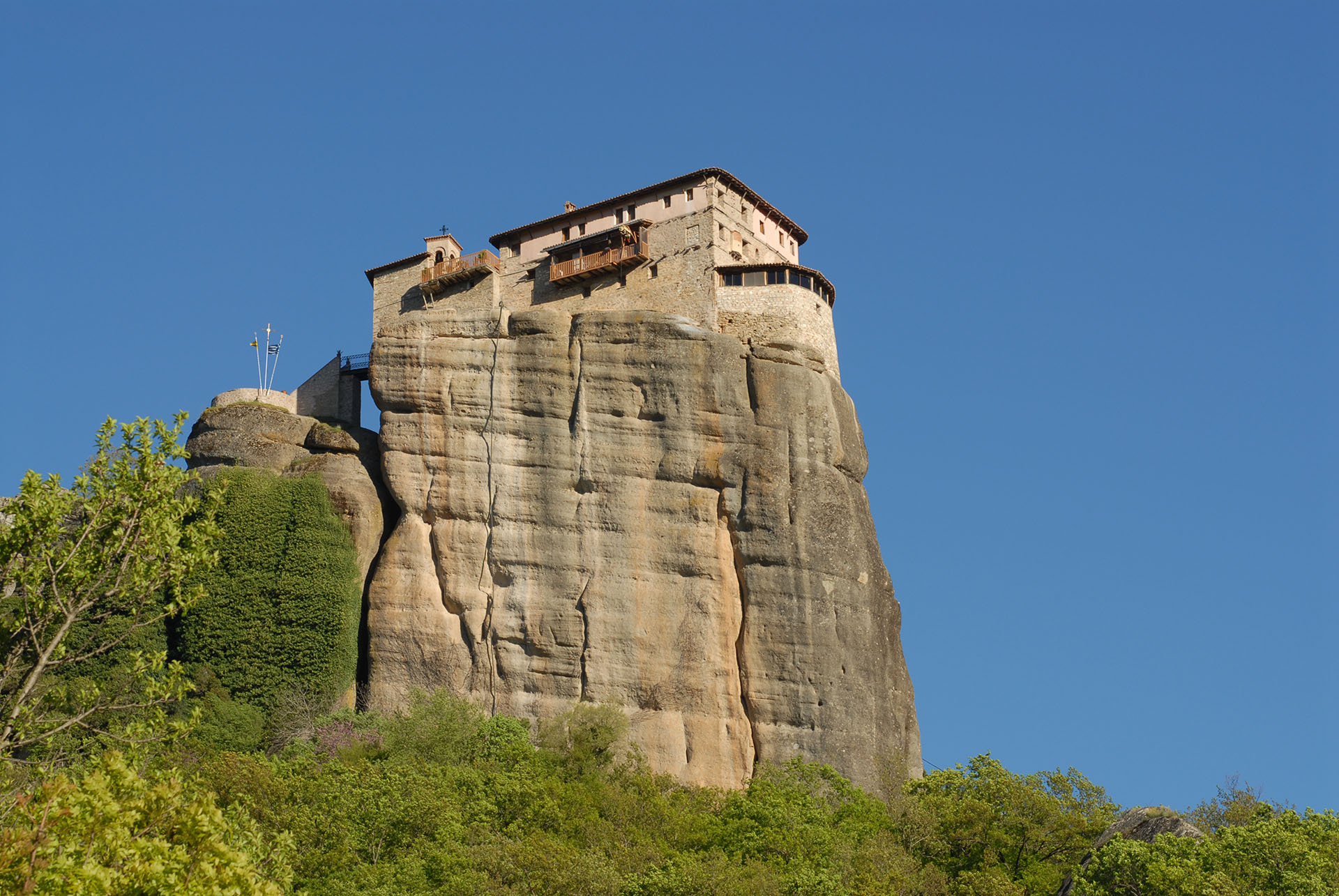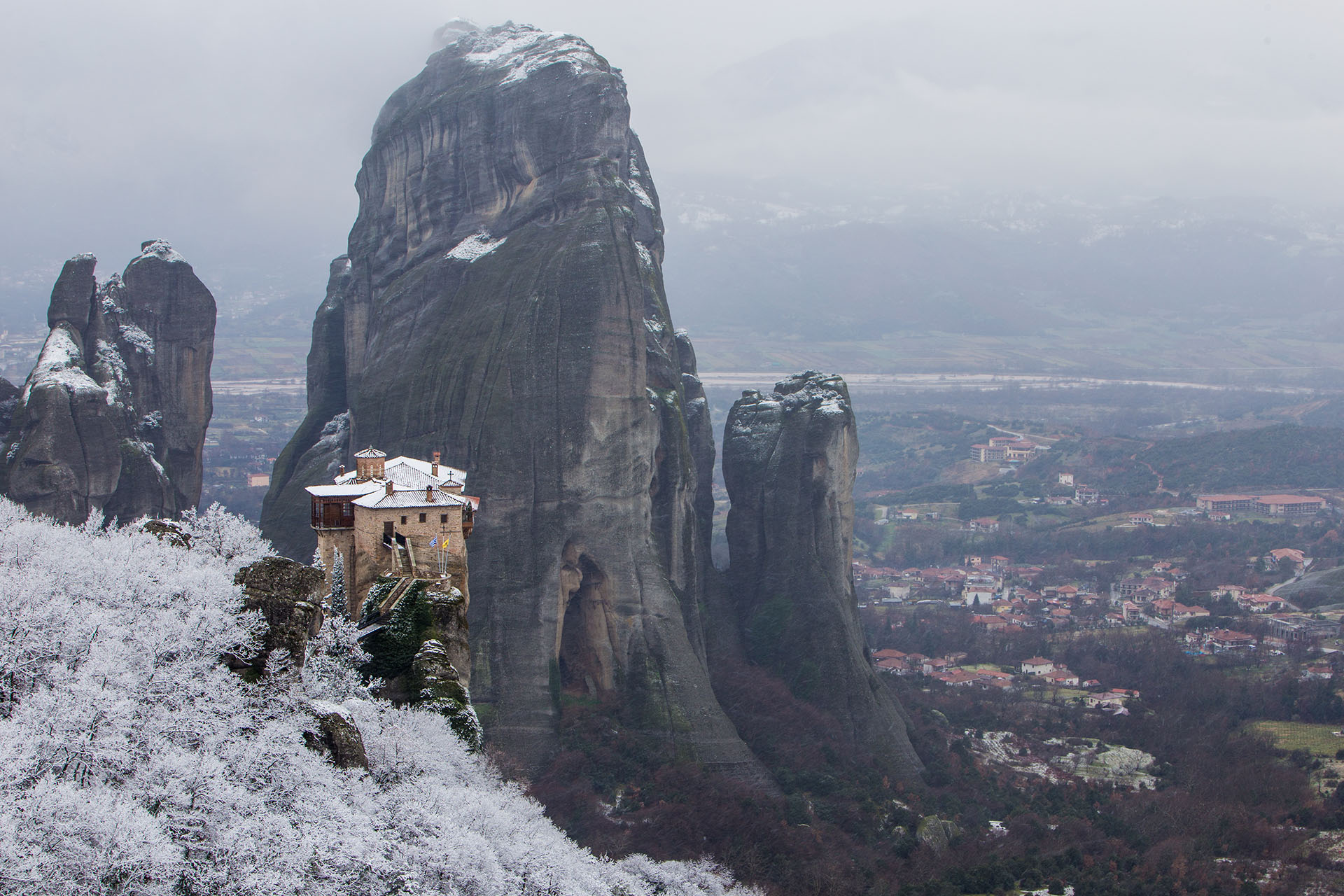General description
The Monastery of Roussanou stands between the monasteries of St. Nicholaos Anapafsas and Varlaam on the way from Kastraki to Meteora. It is built on the most striking pinnacle and its complex of buildings covers the whole plateau of the steep rock in such a way that looks like a natural continuation of the rock. Over there the visitor and the pilgrim enjoy all the beauty and magnificence of the unique Meteora landscape and the faithful Christian feels a spiritual aplift to heaven where the souls of the saintly anchorites and hermits have hallowed these rocks with their deeds and ascetic life. On the east one can see the Holy Trinity and St. Stephen monasteries and on the west the Varlaam Monastery and the Great Meteoron further away. All around the rocky forest of the innumerable gigantic crags stretches away and deep in the horizon the mountain massifs of Koziakas and Pindos capture the visitor’s eye.
For the ascending on the Monastery a rope-ladder was used but today it can easily be done by ciment steps and two small solid bridges constructed in 1930 with the donation of daphne Bouka from Kastraki during the bidshopric of Polykarpos [Thomas]. Already in 1868 during the abbacy of Superior Gedeon a wooden bridge was constructed replacing the dangerous rope-ladders on account of easier and safer access to the rock.
Since 1982 and after its basic renovation and restoration from the Archaeological Department of the region (7th Ephorate of Byzantine Antiquities), the Monastery of Rousanou has been functioning as a nunnery.
The origin of the name of the Roussano Monastery is not verified yet. Several explanations have been proposed but most of them are unreliable. Probably this name is due to the first resident of the rock or the founder of the original church (14th/15th century). Under the name of Roussano this monastery is mentioned in official documents and texts from the third decade of the 16th century which means that this rock was originally known by this name.










